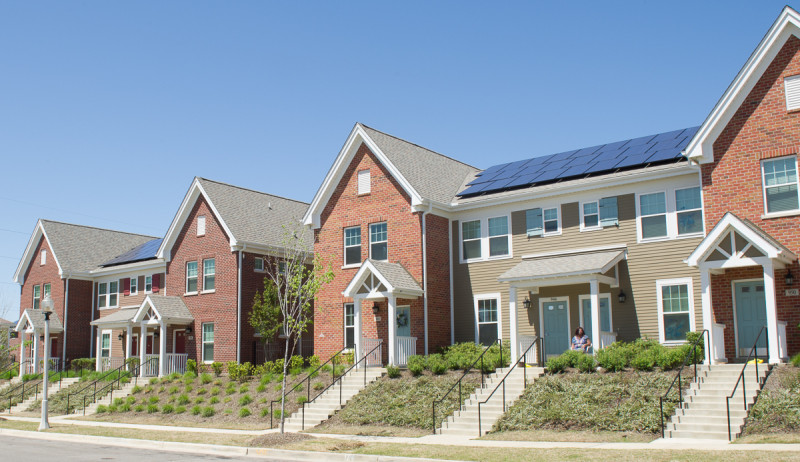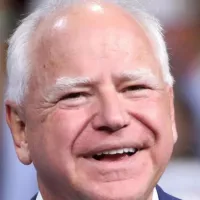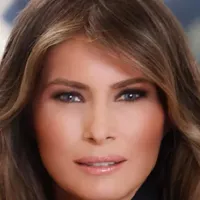Iran, officially the Islamic Republic of Iran and historically known as Persia, is a country in West Asia bordering several nations including Iraq, Turkey, Azerbaijan, Armenia, Turkmenistan, Afghanistan, and Pakistan. It also has coastlines along the Caspian Sea, the Gulf of Oman, and the Persian Gulf. With a population of 92 million, Iran ranks as the 17th largest country in the world by both population and geographic area, and is the sixth-largest country in Asia. The country is divided into 31 provinces across five regions, with Tehran serving as its capital, largest city, and financial hub.
1905: Persian Constitutional Revolution begins
In 1905, the Persian Constitutional Revolution began, leading to the establishment of an Iranian parliament.
1911: End of Persian Constitutional Revolution
In 1911, the Persian Constitutional Revolution ended, resulting in the establishment of an Iranian parliament.
1921: Coup d'état
After the 1921 coup d'état, the Qajar dynasty was replaced with the Pahlavi dynasty, founded by Reza Shah.
1925: Pahlavi dynasty establishment
In 1925, Reza Shah established the Pahlavi dynasty after ousting the last Qajar Shah.
1925: Mandatory Military Service Established
Since 1925, all male citizens in Iran aged 18 must serve around 14 months in the Islamic Republic of Iran Armed Forces (IRIAF) or the Islamic Revolutionary Guard Corps (IRGC).
1928: Establishment of New Iranian School of Fine Art
In 1928, Kamal-ol-molk established a new Iranian school of fine art, impacting painting norms and adopting a naturalistic style.
1933: Tehran Symphony Orchestra Founded
In 1933, the Tehran Symphony Orchestra was founded.
August 1941: Anglo-Soviet Invasion
In August 1941, the Anglo-Soviet invasion of Iran occurred in Operation Countenance, leading to the occupation of Iran and the deposition of Reza Shah.
1941: Abdication of Reza Shah
In 1941, Reza Shah was forced to abdicate due to the Anglo-Soviet invasion of Iran.
1941: Anglo-Soviet invasion of Iran
In 1941, the Anglo-Soviet invasion of Iran occurred, leading to the rise of Mohammad Reza Pahlavi.
1943: Tehran Conference
In 1943, the Allied "Big Three" issued the Tehran Declaration at the Tehran Conference, guaranteeing the post-war independence and boundaries of Iran.
1947: Founding of Iran's National Olympic Committee
Iran's National Olympic Committee was founded in 1947.
1949: Opening of Apadana, Tehran's First Modern Art Gallery
In 1949, Tehran's first modern art gallery, Apadana, was opened by Mahmud Javadipur, Hosein Kazemi, and Hushang Ajudani.
1949: Establishment of the School of National Music
In the late 1940s, specifically in 1949, Ruhollah Khaleqi founded the country's first national music society and established the School of National Music.
1950: Urban Proportion of Population
From 1950 to 2002, the urban proportion of Iran's population increased from 27% to 60%.
1951: Nationalization of Oil Industry
In 1951, the Iranian parliament, under Prime Minister Mohammad Mosaddegh, voted to nationalize the British-owned oil industry, leading to the Abadan Crisis.
1952: Mosaddegh re-appointment as prime minister
In 1952, Mosaddegh was removed from power but was quickly re-appointed by the Shah, due to a popular uprising in support of the premier.
1952: Government control of commercial fishing
In 1952, the Iranian government assumed control of commercial fishing.
August 1953: Failed Military Coup and Exile of Shah
In August 1953, after a failed military coup by Imperial Guard Colonel Nematollah Nassiri, Mosaddegh forced the Shah into a brief exile.
1953: Anglo-American coup
In 1953, the Anglo-American coup took place following Mohammad Mosaddegh's attempts to nationalize the oil industry.
1956: Population
In 1956, Iran's population was about 19 million.
1960: Co-invention of the first gas laser
In 1960, Ali Javan co-invented the first gas laser.
1974: Iran Hosts the Asian Games
In 1974, Iran became the first country in West Asia to host the Asian Games.
1976: Increase in fish production from inland waters
Between 1976 and 2004, the combined fish take from inland waters by the state and private sectors increased from 1,100 tons to 110,175 tons.
1978: Rising Unpopularity of the Shah
By 1978, the Shah had become wildly unpopular among the Iranian people, leading to daily demonstrations, martial law, and the Black Friday incident where security forces opened fire on protestors.
March 1979: Referendum on Islamic Republic
On 31 March 1979, a referendum was held in Iran, which overwhelmingly approved the transition from monarchy to an Islamic republic.
November 1979: US Embassy Seized
On 4 November 1979, Iranian students seized US embassy personnel, holding 52 hostages.
December 1979: Khomeini becomes Supreme Leader
In December 1979, Ruhollah Khomeini became Supreme Leader of Iran, following the drafting of the new theocratic constitution.
1979: Iranian Revolution
In 1979, the Iranian Revolution overthrew the monarchy, leading to the establishment of the Islamic Republic of Iran by Ruhollah Khomeini.
January 1981: Hostage release
In January 1981, the 52 hostages seized in November 1979 were released after being held for 444 days.
1981: UN Investigation Concludes Iran Committed Genocide
In 2024, a UN Special Rapporteur investigation concluded that Iran committed genocide against its political and religious minorities during 1981–1982 massacres and 1988 mass executions.
1982: Establishment of Hezbollah in Lebanon
In 1982, Iran began building its network of state and non-state actors by establishing Hezbollah in Lebanon, marking the beginning of Iran's expanded regional influence.
1982: Iranian forces push back Iraqi army
In 1982, Iranian forces pushed the Iraqi army back into Iraq.
1982: UN Investigation Concludes Iran Committed Genocide
In 2024, a UN Special Rapporteur investigation concluded that Iran committed genocide against its political and religious minorities during 1981–1982 massacres and 1988 mass executions.
1988: UN Investigation Concludes Iran Committed Genocide
In 2024, a UN Special Rapporteur investigation concluded that Iran committed genocide against its political and religious minorities during 1981–1982 massacres and 1988 mass executions.
June 1989: Death of Khomeini and Succession of Khamenei
Following Khomeini's death on 3 June 1989, Ali Khamenei was named as the next Supreme Leader after being appointed by a 25-man Constitutional Reform Council.
1989: Rafsanjani becomes President
In 1989, President Akbar Rafsanjani focused on rebuilding the Iranian economy with pro-business policies.
1989: Formation of the Supreme National Security Council (SNSC)
In 1989, during the Iranian constitutional referendum, the Supreme National Security Council (SNSC) was formed to protect national interests, the revolution, territorial integrity, and national sovereignty, as mandated by Article 176 of the Constitution.
1991: First direct attack on Israel by a state force
Since 1991, 2024 Iranian attack on Israel was the first direct attack by a state force.
1996: Increase in publication output
Iran increased its publication output nearly tenfold from 1996 through 2004.
1997: Khatami becomes President
In 1997, moderate reformist Mohammad Khatami succeeded Rafsanjani, advocating for freedom of expression and constructive diplomatic relations.
2000: Kura-Araxes culture existence
Around the year 2000 BC, the Kura–Araxes culture existed in northwestern Iran and the Caucasus.
2000: Juan José Linz on Iranian Regime
In 2000, Juan José Linz characterized the Iranian regime as combining the ideological bent of totalitarianism with the limited pluralism of authoritarianism.
2001: Export of Technical and Engineering Services
From 2001 to 2011, Iran exported over $20 billion worth of technical and engineering services.
2002: Urban Proportion of Population
From 1950 to 2002, the urban proportion of Iran's population increased from 27% to 60%.
2003: Ethnic groups estimate
According to a 2003 estimate, Persians made up 51% of the population, while Azerbaijanis made up 24%, Gilaks and Mazenderanis 8%, Kurds 7%, Arabs 3%, Lurs 2%, Balochis 2%, Turkmens 2% and other groups made up the remaining 1%.
2003: Iran's Influence in Iraq after US Invasion
After the US invasion of Iraq in 2003 and the fall of Saddam Hussein, Iran began shaping Iraq's politics and financed and trained militia groups.
2003: Expansion into Iraq
After the US invasion of Iraq in 2003, Iran expanded its influence into Iraq.
2003: Bam earthquake
In 2003, the Bam earthquake occurred in Iran, causing widespread devastation.
2004: Increase in fish production from inland waters
Between 1976 and 2004, the combined fish take from inland waters by the state and private sectors increased from 1,100 tons to 110,175 tons.
2004: Iran Provides Military Support to Houthis in Yemen
From 2004 onwards, during Yemen's civil war, Iran provided military support to the Houthis, a Zaydi Shia movement fighting Yemen's Sunni government.
2004: Opening of renewable energy plants
In 2004, Iran opened its first wind-powered and geothermal plants.
2004: Increase in publication output
Iran increased its publication output nearly tenfold from 1996 through 2004, and ranked first in output growth rate, followed by China.
2004: Establishment of the Iranian Space Agency
The Iranian Space Agency was established in 2004.
2005: Ahmadinejad elected
In 2005, Mahmoud Ahmadinejad, a conservative populist and nationalist, was elected president of Iran.
2006: Disputed Election Results and Protests
In 2006, Iran's election results were widely disputed, leading to protests.
2006: Cloning of a sheep
In 2006, Iranian scientists successfully cloned a sheep at the Royan Research Centre in Tehran.
2007: Men's National Basketball Team Wins Asian Championship
Since 2007, the men's national basketball team has won three Asian Championships.
2008: Increase in industrial production growth rate
From 2008 to 2009, Iran leaped to 28th place from 69th in annual industrial production growth rate.
2008: Ethnic groups estimate
The Library of Congress in 2008 issued slightly different estimates of the population by ethnicity: 65% Persians, 16% Azerbaijanis, 7% Kurds, 6% Lurs, 2% Arabs, 2% Balochis, 1% Turkic tribal groups, and non-Persian, non-Turkic groups less than 1%.
2009: Increase in industrial production growth rate
From 2008 to 2009, Iran leaped to 28th place from 69th in annual industrial production growth rate.
2009: Iran becomes orbital-launch-capable nation
In 2009, Iran became an orbital-launch-capable nation and placed its domestically built satellite Omid into orbit on the 30th anniversary of the revolution, becoming the 9th country capable of both producing a satellite and sending it into space from a domestically made launcher.
2009: First solar thermal plant
In 2009, Iran's first solar thermal plant began operating.
2009: Facebook Blocked in Iran
Since 2009, direct access to many worldwide mainstream websites has been blocked in Iran, including Facebook.
2010: Economic Reform Plan Initiated
In 2010, Iran initiated an economic reform plan to gradually cut subsidies and replace them with targeted social assistance, aiming to move towards free market prices and increase productivity and social justice.
2010: Unveiling of Sorena 2 robot
In 2010, the Iranian humanoid robot Sorena 2, designed by engineers at the University of Tehran, was unveiled.
2010: Inscription of Carpet Weaving Skills to UNESCO List
In 2010, the traditional skills of carpet weaving in Fars province and Kashan were inscribed to the UNESCO Intangible Cultural Heritage List.
2010: Introduction of National Basic Income
Iran was the first country to introduce a national basic income in Autumn 2010.
2010: Government goal of installed capacity
The government's goal of 53 GW of installed capacity by 2010 was to be reached by bringing on line new gas-fired plants, and adding hydropower and nuclear generation capacity.
2011: First nuclear power plant online
In 2011, Iran's first nuclear power plant went online.
2011: Iranian Industrial Companies Carrying Out Projects
In 2011, some 66 Iranian industrial companies were carrying out projects in 27 countries.
2011: Men's National Volleyball Team Wins Asian Championship
In 2011, the men's national volleyball team won the Asian Men's Volleyball Championship.
2011: Ethnic groups estimate
The World Factbook at 2011 gives the same figures of the 2003 estimate: Persians made up 51% of the population, while Azerbaijanis made up 24%, Gilaks and Mazenderanis 8%, Kurds 7%, Arabs 3%, Lurs 2%, Balochis 2%, Turkmens 2% and other groups made up the remaining 1%.
2012: Research output ranking prediction
According to a study by SCImago in 2012, Iran would rank fourth in research output by 2018, if the trend persisted.
2013: Rouhani elected
In 2013, centrist and reformist Hassan Rouhani was elected president of Iran, encouraging personal freedom and improved diplomatic relations.
2013: Men's National Volleyball Team Wins Asian Championship
In 2013, the men's national volleyball team won the Asian Men's Volleyball Championship.
2014: IRGC-Linked Companies Build Economic Corridor in Iraq
Following Iraq's struggle against ISIS in 2014, companies linked to the IRGC, such as Khatam al-Anbiya, started to build roads, power plants, hotels and businesses in Iraq, creating an economic corridor worth around $9 billion before COVID-19.
2014: Expansion into Yemen
From 2014, the instability in Yemen allowed Iran to build strong alliances and footholds in the country.
2014: Maryam Mirzakhani Receives Fields Medal
In 2014, Iranian mathematician Maryam Mirzakhani became the first woman, and Iranian, to receive the Fields Medal, the highest prize in mathematics.
2015: Joint Comprehensive Plan of Action (JCPOA) Agreement
In 2015, Iran and the P5+1 agreed to the Joint Comprehensive Plan of Action (JCPOA), aiming to end economic sanctions in exchange for restrictions on producing enriched uranium.
2015: Joint Comprehensive Plan of Action reached
In 2015, the Joint Comprehensive Plan of Action (JCPOA) was reached in Vienna between Iran, the P5+1, and the EU.
2016: Literacy Rate
As of 2016, literacy among people aged 15 and older in Iran was 86%, with men (90%) significantly more literate than women (81%).
2016: Launch of Simorgh
In 2016, Iran launched Simorgh, the successor of Safir.
2016: Health insurance coverage
In 2016, about 90% of Iranians had health insurance.
2017: 2017-18 Iranian Protests
The 2017–18 Iranian protests swept across the country in response to the economic and political situation, resulting in thousands of arrests.
2018: Research output ranking prediction
According to a study by SCImago in 2012, Iran would rank fourth in research output by 2018, if the trend persisted.
2018: Population Growth Rate
In 2018, Iran's population growth rate was about 1.39%.
2018: US withdraws from JCPOA
In 2018, the US under President Donald Trump withdrew from the JCPOA and imposed new sanctions on Iran.
2018: US Withdraws from JCPOA and Reinstates Sanctions
In 2018, the US withdrew from the Joint Comprehensive Plan of Action (JCPOA) under the Trump administration and reimposed sanctions, which was met with resistance by Iran and other members of the P5+1.
2019: Highest proportion of retracted publications
According to a 2019 study by Isabel Campos-Varela et al., Iran recorded the highest proportion of retracted publications globally, with 15.52 retractions per 10,000 publications.
2019: Museum Visits in Iran
Around 25 million people visited the museums in Iran in 2019.
2019: Discovery of Southern Oil Field
In 2019, Iran discovered a southern oil field containing 50 bn barrels.
2019: Registration of Vank Cathedral as World Heritage Site
In 2019, the Iranian government registered the Vank Cathedral, in Isfahan, as a World Heritage Site.
2019: Tourism growth before COVID-19
In 2019, tourism in Iran had been rapidly growing, reaching nearly 9 million foreign visitors, making it the world's third fastest-growing tourism destination.
2019: 2019-20 Iranian Protests
On 15 November 2019, protests started in Ahvaz and spread across Iran after the government announced fuel price increases of up to 300%. The protests were met with a week-long internet shutdown and a severe governmental crackdown.
January 2020: Downing of Ukraine International Airlines Flight 752
On 8 January 2020, Ukraine International Airlines Flight 752, a Boeing 737–800, was shot down by the IRGC shortly after takeoff from Tehran, killing all 176 occupants and leading to protests.
2020: Mobile Internet Usage
As of 2020, 70 million Iranians use high-speed mobile internet.
2020: Iran Announces End to JCPOA Limits
By 2020, Iran announced it would no longer observe any limit set by the Joint Comprehensive Plan of Action (JCPOA).
2020: Assassination of Qasem Soleimani
In 2020, IRGC general Qasem Soleimani was assassinated by the US, heightening tensions between them, followed by Iran's retaliation against US airbases in Iraq.
January 2021: Increased Internet Censorship in Iran
Since January 2021, Iranian authorities have blocked several social media platforms, contributing to the country's strict internet censorship.
2021: Raisi elected President
In 2021, Ebrahim Raisi was elected president of Iran, succeeding Rouhani.
2021: Iran and China Sign 25-Year Cooperation Agreement
In 2021, Iran and China signed a 25-year cooperation agreement to strengthen relations, including "political, strategic and economic" components.
2021: Increase in Iran's Military Spending
In 2021, Iran's military spending increased for the first time in four years, reaching $24.6 billion, which represented 2.3% of the national GDP. Funding for the IRGC accounted for 34% of Iran's total military spending in 2021.
2021: Domestic Tourism Spending
In 2021, Iranian tourists spent $33 billion on domestic tourism.
August 2022: Russia launches Khayyam satellite
In August 2022, Russia launched another Iranian remote-sensing satellite, Khayyam, into orbit from Kazakhstan.
September 2022: Protests Following Death of Mahsa Amini
On 16 September 2022, protests against the government began after Mahsa Amini died in police custody following her arrest by the Guidance Patrol, known as the "morality police".
2022: High State Subsidies in 2022
In 2022, Iran faced chronic budget deficits partly due to large state subsidies, totaling $100 billion for energy alone.
2022: UN Experts Urge Iran to Stop "Systematic Persecution" of Religious Minorities
In 2022, a group of UN experts urged Iran to stop the "systematic persecution" of religious minorities, noting arrests, university bans, and home demolitions targeting members of the Baháʼí Faith.
2022: Tourism share in the economy
In 2022, tourism in Iran expanded its share to 5% of the economy.
2022: Unemployment Rate in 2022
The unemployment rate in Iran was 9% in 2022.
February 2023: Population of Iran
By February 2023, Iran's population reached about 85 million.
November 2023: Iran's Uranium Enrichment Status
As of November 2023, Iran had uranium enriched up to 60% fissile content, close to weapon grade, leading some analysts to regard Iran as a de facto nuclear power.
November 2023: Iran Finalizes Acquisition of Russian Military Hardware
In November 2023, following Russia's purchase of Iranian drones during the invasion of Ukraine, the IRIAF finalized arrangements to acquire Russian Sukhoi Su-35 fighter jets, Mil Mi-28 attack helicopters, air defense and missile systems.
2023: Crude Oil Production
As of 2023, Iran produced 4% of the world's crude oil (3.6 million barrels per day), generating US$36bn of export revenue.
2023: Car Production Growth
In 2023, Iran built 1.188 million cars, showing a 12% growth compared to the previous years.
2023: Tourism growth and visa changes
In 2023, Iran's tourism experienced a 43% growth, attracting 6 million foreign tourists. Also in 2023, the government ended visa requirements for 60 countries.
2023: Growth of West Asian Travelers
In the first seven months of 2023, travelers from other West Asian countries visiting Iran grew by 31%.
2023: High retraction rates
Media reports from 2023 indicate that Iran continues to rank among the countries with the highest retraction rates.
2023: Weakening of Iranian Government
Since 2023, Iran's economic struggles and the weakening of its key allies have left the Iranian government weakened and isolated.
January 2024: Launch of Soraya satellite
In January 2024, Iran launched the Soraya satellite into its highest orbit yet (750 km) using the Qaem 100 rocket. The Mahda, Kayan, and Hatef satellites were also successfully launched simultaneously using the Simorgh carrier rocket, marking the first time the country sent three satellites into space at once.
February 2024: Launch of Pars 1 satellite
In February 2024, Iran launched its domestically developed imaging satellite, Pars 1, from Russia into orbit.
April 2024: Israeli strike and Iranian retaliation
In April 2024, an Israeli airstrike on the Iranian consulate in Damascus resulted in an IRGC commander's death, and Iran retaliated with UAVs, cruise missiles and ballistic missiles.
April 2024: Discovery of Giant Shale Oil Deposits
In April 2024, the NIOC discovered 10 giant shale oil deposits, totaling 2.6 bn barrels.
May 2024: Death of Raisi in helicopter crash
In May 2024, President Raisi was killed in a helicopter crash.
October 2024: Iran missile attack on Israel
On 1 October 2024, Iran launched 180 ballistic missiles at Israel.
December 2024: Setback for Iran's Influence with the potential fall of Assad regime
In December 2024, the potential fall of the Assad regime in Syria, a close ally of Iran, represented a severe setback for Iran's political influence in the region.
2024: Iran's Economy in 2024
As of 2024, Iran has the world's 19th largest economy (by PPP), characterized by a mixture of central planning, state ownership, and small-scale private ventures. The economy relies heavily on its hydrocarbon sector, with 10% of the world's oil reserves and 15% of gas reserves.
2024: Energy crisis
Despite being an energy superpower as of 2024-2025 Iran suffers from an energy crisis, manifested by many power outages.
2024: Iran's Electoral Democracy Ranking
In 2024, Iran was ranked 158th in electoral democracy according to V-Dem Democracy Indices, classifying it as an electoral autocracy under the Regimes of the World classification.
2024: Global car manufacturing ranking
In 2024, Iran was ranked 16th in global car manufacturing, ahead of the UK, Italy, and Russia.
2024: UN Investigation Concludes Iran Committed Genocide
In 2024, a UN Special Rapporteur investigation concluded that Iran committed genocide against its political and religious minorities during 1981–1982 massacres and 1988 mass executions.
2024: Global Innovation Index Ranking
Iran was ranked 64th in the Global Innovation Index in 2024.
January 2025: Men's National Volleyball Team Ranking
As of January 2025, the men's national volleyball team is the 2nd strongest in Asia and 15th in the FIVB World Rankings.
February 2025: Report on Parallel Systems in Iran
In February 2025, The New York Times reported, based on Karim Sadjadpour's assessment, that Iran has two parallel systems: one controlled by the military and intelligence forces reporting to the Rahbar, and another run by diplomats and politicians who engage with Western media but have limited knowledge of Iran's nuclear program.
April 2025: Men's National Football Team Ranking
As of April 2025, the men's national football team ranks 2nd in Asia and 18th in the FIFA World Rankings.
May 2025: Mass deportation of Afghan migrants
In May 2025, the Iranian government ordered the mass deportation of an estimated 4 million Afghan migrants and refugees living in Iran.
June 2025: Escalation and Ceasefire Between Israel and Iran
In June 2025, Israel launched strikes across Iran, leading to retaliatory missile strikes and a brief direct conflict, followed by a ceasefire on 24 June after US intervention.
2025: Afghan Migrants and Refugees
As of 2025, Iran was home to an estimated 4 million Afghan migrants and refugees.
2025: Energy crisis
Despite being an energy superpower as of 2024-2025 Iran suffers from an energy crisis, manifested by many power outages.
2025: Iran-Israel war escalation
In 2025, Israeli strikes on Iran escalated tensions into the Iran–Israel war.
2025: Nuclear Program and Negotiations
In early 2025, Iran was rapidly advancing its nuclear program, leading to stalled negotiations with the US and IAEA finding Iran non-compliant.
2025: Planned Investment in Oil
Iran plans to invest $500 billion in oil by 2025.
2026: Tourism Sector Investment Projection
Iran projects an investment of $32 billion in the tourism sector by 2026.
2050: Projected Population Stabilization
Studies project that Iran's population growth will continue to slow until it stabilizes at around 105 million by 2050.
Mentioned in this timeline

WhatsApp is a widely-used instant messaging and VoIP service owned...

Instagram is a photo and video-sharing social networking service owned...
Ukraine is a large country in Eastern Europe second in...
Facebook is a social media and networking service created in...
Saudi Arabia officially the Kingdom of Saudi Arabia KSA is...
China officially the People's Republic of China PRC is an...
Trending

3 months ago Tereza Valentová Praised by Coco Gauff as a Potential WTA Tour Threat

1 month ago Housing Crisis: Americans Face Trade-off Between Affordability and Safety Amidst Rising Prices.

3 months ago ATP Basel Day 2 Predictions: Wawrinka vs Kecmanovic, Mpetshi Perricard vs Fonseca
7 months ago Popyrin Faces Draper at Queen's Club Amidst Murray Flashbacks and Tournament Predictions.

Tim Walz is an American politician educator and Army National Guard veteran currently serving as the st Governor of Minnesota...
2 months ago Blinkova and Salkova to face off at the 2025 Jiangxi Open.
Popular

Stranger Things created by the Duffer Brothers is a popular...

XXXTentacion born Jahseh Dwayne Ricardo Onfroy was a controversial yet...

Kelsey Grammer is an accomplished American actor producer and singer...

Candace Owens is an American conservative political commentator and author...

Bernie Sanders is a prominent American politician currently serving as...

Melania Trump a Slovenian-American former model has served as First...